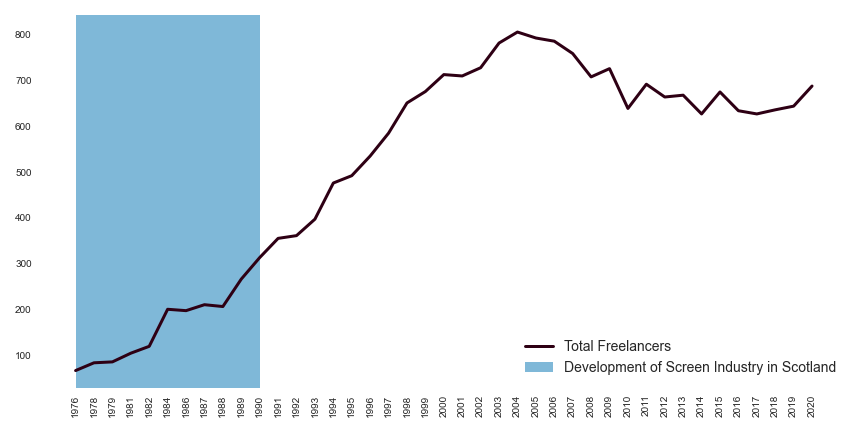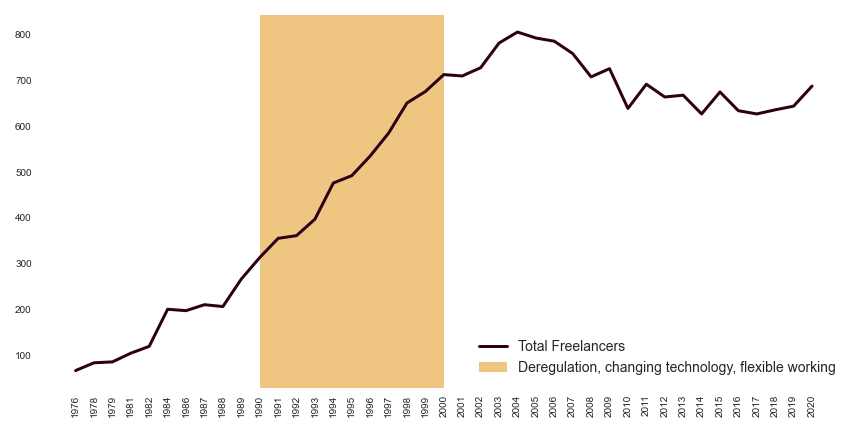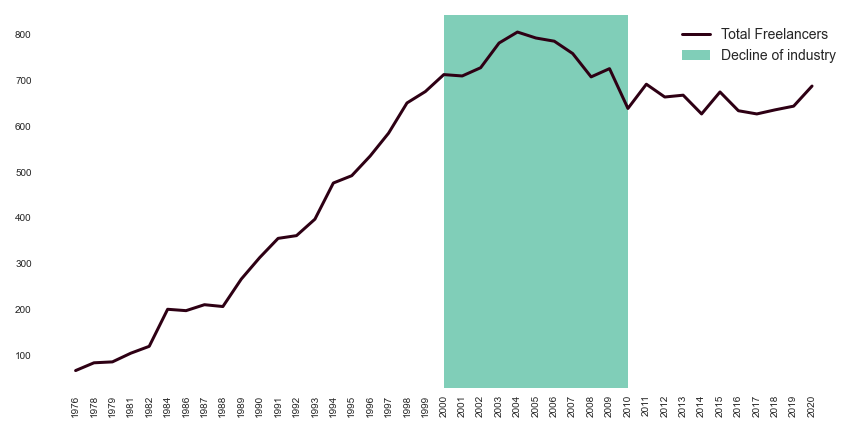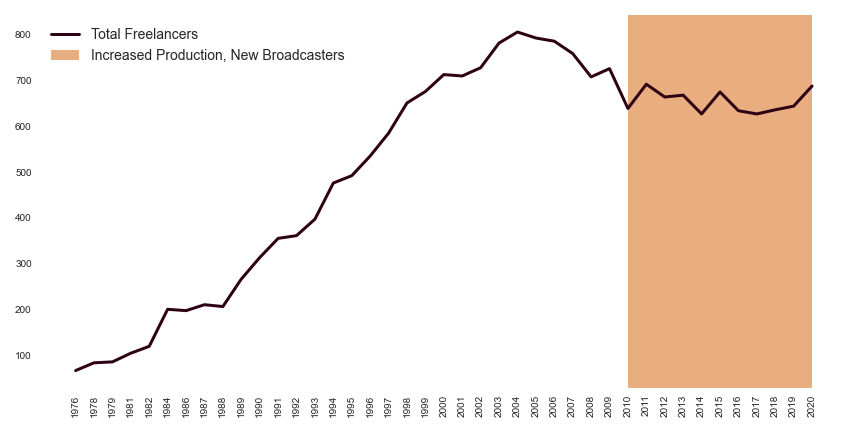1976-1989
The Scottish screen sector as a pathfinder ‘creative cluster’
The impetus behind the launch of Film Bang in 1976 came from a tight-knit group of freelance members of the ACTT union. Over the next few years their aspirations for an indigenous film industry were realised with the development of a proto-type screen industry creative cluster for Scotland with feature film and television production supported by inward investment such as by Channel 4 and Goldcrest Films. Key productions include feature films Gregory’s Girl (1981), Local Hero (1983), and many television programmes such as Brond (1987), Blood Red Roses (1986).

1990-1999
De-regulation, accelerating growth, new technology and flexible work practices
The 1990s marked a period of continuing and accelerating growth of the freelance workforce. The 1990 Broadcasting Act required an increased quota of independently produced programmes not just for Channel 4 but also for the BBC and ITV and local independent production companies. Production of major feature films in Scotland continued and used local crews including Shallow Grave (1991), Rob Roy (1995), Trainspotting (1996). There were new, more flexible working arrangements with the demise of the closed-shop union for the industry and many of the previous barriers to entry ceased to operate.

2000-2009
Uncertainty leads to stalled growth and decline for the industry in Scotland
The 2003 Communication Act led to the transformation of the ITV system. STV, the Scottish ITV franchise-holder, overstretched and vulnerable, lost key returning network commissions that had previously provided regular work for freelancers. At the same time fewer feature films were being made in Scotland and the national agency, Scottish Screen, went through a period of instability. Recognition of this decline led the Scottish Government to establish the Scottish Broadcasting Commission in 2007 to investigate how to improve levels of production and assess the importance of the screen sector to the Scottish economy.

2010-2020
Increased production, new broadcasters
Since 2010 the workforce registered with Film Bang has levelled at around 650. This reflects a gradual restoration of production and some significant high-budget incoming productions such as the Outlander series (2014-present) made by Left Bank Productions and Sony Pictures for the US Starz network, and The Outlaw King (2018) made by Sigma Films for Netflix. However as noted earlier, other sources, such as the ONS, point to higher growth for the sector during this period, with the impact of freelance crew networking and sharing contact information via social media groups on Facebook and other platforms, the Film Bang directory is no longer a comprehensive record of the Scottish freelance community.
